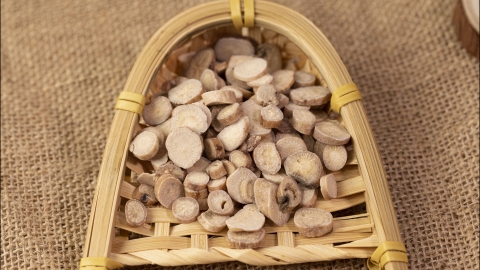Can Rehmannia glutinosa and Tribulus terrestris with Paeonia lactiflora improve kidney deficiency?
Generally speaking, Sh熟地黄 (Rehmannia glutinosa) and沙苑子白芍 (Astragalus complanatus and Paeonia lactiflora) can help improve kidney deficiency; however, Chinese herbal medicine should be used under the guidance of a physician. Detailed analysis is as follows:

Sh熟地黄 has a sweet taste and warm nature with a moist texture, entering the liver and kidney meridians. It deeply nourishes kidney yin and replenishes kidney essence, effectively addressing problems such as soreness and weakness of the waist and knees and insufficient essence caused by kidney deficiency, fundamentally supplementing the yin essence of the kidney. 沙苑子 possesses a sweet taste and warm nature, entering the liver and kidney meridians. It can tonify the kidney and consolidate essence, preventing the loss of kidney essence, while also benefiting the liver. As the liver and kidney share a common source, nourishing the liver can assist in kidney tonification, helping regulate conditions like seminal emission and nocturnal enuresis caused by kidney deficiency. 白芍 features a sweet and slightly cold nature with an acidic taste, entering the liver and spleen meridians. It nourishes the blood and soothes the liver; sufficient liver blood can nourish kidney yin, and mutual nourishment between the liver and kidney enhances the effect of kidney tonification. Additionally, its function of soothing the liver can alleviate discomfort such as liver qi stagnation possibly accompanying kidney deficiency. Used together, these three herbs work synergistically from three aspects—nourishing yin and replenishing essence, consolidating and retaining essence, and nourishing the liver to support kidney function—to improve kidney deficiency.
The combined use of these herbs requires dosage adjustments based on the specific type of kidney deficiency. For those with yin deficiency and fire hyperactivity, the dosages of 熟地黄 and 沙苑子 should be reduced. 熟地黄 is rich and greasy in texture, and excessive use by individuals with weak spleen and stomach may lead to abdominal distension and reduced appetite; therefore, it should be combined with ingredients that strengthen the spleen. Continuous long-term use is not recommended, and usage should be adjusted according to the body's condition. If any adverse reactions occur, usage should be discontinued.





